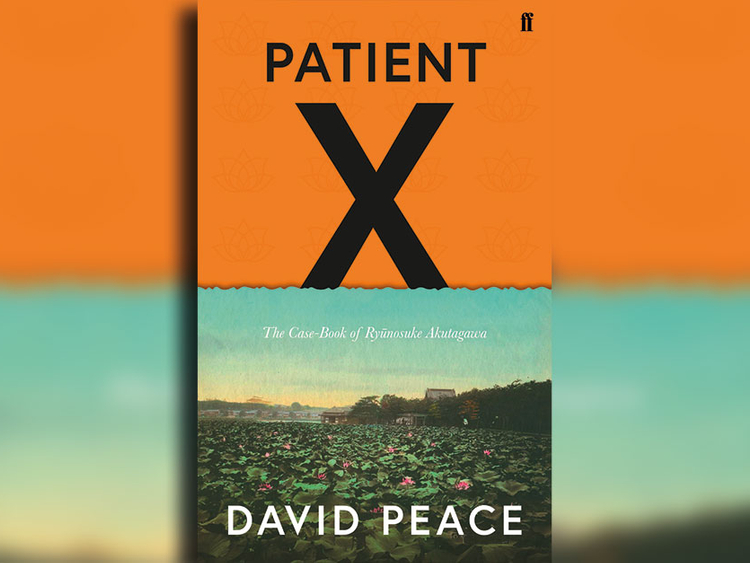
Patient X: The Case-Book of Ryunosuke Akutagawa
By David Peace, Alfred A. Knopf, 311 pages, $26.95
Akira Kurosawa’s great film Rashomon portrays a rape and a murder from four conflicting perspectives, leaving the disoriented viewer in the dark about what really happened. The film borrowed its unsettling plot from a tale called In a Bamboo Grove by the Japanese short story master Ryunosuke Akutagawa, who, after a scant 13-year career, committed suicide in 1927 at the age of 35. “Now more than ever,” the versatile British writer David Peace writes, in a note appended to his dazzling, dizzying new novel, Patient X, “this one story seems to predict and speak to our world of collapsed grand narratives, post truths, fake news and billions of competing, vehement subjectivities, all fragmented and adrift.”
Fragmented and adrift is a pretty good description of the structure of Patient X, which consists of 12 loosely connected tales based on Akutagawa’s writings and events from his life. For readers unfamiliar with Akutagawa — who is probably less well known to readers than such near-contemporaries as Natsume Soseki and Junichiro Tanizaki, both of whom figure in the novel — Peace’s book provides a vivid, if challenging, introduction. Patient X is an uncanny act of ventriloquism, fusing Akutagawa’s jagged storytelling voice with Peace’s own pulsing narration.
Akutagawa’s early life, in Peace’s telling, was scarred by trauma. His mother, “born of samurai stock” and married to “a parvenu beneath herself,” succumbed to mental illness six months after Ryunosuke’s birth. In a harrowing early scene, the reluctant child is taken to see her, “her tiny face ashen, her tiny body lifeless, as though already no longer really here,” a living ghost. For the rest of his life, Akutagawa, who was farmed out to live with an uncle’s family in a shabby industrial ward in Tokyo, feared he would inherit his mother’s madness.
A fretful boy, Akutagawa, “afraid of the dark, afraid of the light,” found refuge in books. “Don’t be scared, they whisper. We can bring you to another time, we can take you to a different world.” His beloved Aunt Fuki introduced him to the fantasy world of ancient Japanese folklore, the basis of some of his finest writing, including the tale that inspired Kurosawa. Through reading, the child’s humdrum world was magically transformed: “The frayed tatami, now forest floors. The dripping tap, a thunderous river. The steep stairs, a mountain pass.” Later, libraries and secondhand bookshops helped him build his own “house of books” composed of Poe and Baudelaire, Balzac and Dostoyevsky. According to Peace, books were Akutagawa’s primary reality; his life was “always, already secondhand.”
Akutagawa was initially dismissed, by both his colleagues and the literary critics, as a mere “mosaicist,” lacking in originality. But for Peace, such literary appropriation links Akutagawa to our own postmodern world of blurred genres and textual borrowing, of which Patient X is a distinguished example.
In the Borgesian section called A Twice-Told Tale, the protagonist, split into multiple selves, finds himself “trapped inside” a story by Poe, full of literary echoes, doubles and narrative repetition. An urban flaneur like the central character in Poe’s The Man of the Crowd, he immerses himself in Poe’s The Premature Burial, only to find himself placed in a coffin, “the world growing charnel, grim.”
Much of Tokyo was buried in the Great Kanto Earthquake of 1923. After the initial devastating shocks, the Akutagawa of Peace’s novel returns to his house to retrieve his favourite books. After much hesitation — “Baudelaire or Strindberg? Flaubert or Dostoyevsky?” — he finally settles on just two, the Bible and The Communist Manifesto.
During his final years, Akutagawa descended into a hell partially of his own making. A serial womaniser like his father, he felt guilty about his affairs and his neglect of his children — “his sins, his countless, countless sins.” Disturbed by the human cost of the Japanese empire, he was troubled by conflicting newspaper accounts (shades of Rashomon) of the ritual suicide of General Nogi, a hero of the ruinous turn-of-the-century wars with China and Russia.
“These are the stories of Patient X in one of our iron castles,” Peace writes. His subtitle refers to Akutagawa’s “casebook,” as though from a file in a mental hospital. A different meaning of “Patient X” is suggested near the end of the novel, after Akutagawa has downed a fatal dose of Veronal. Contemplating his idiosyncratic biography of Jesus — “my Christ is a poet,” he writes, “a Bohemian poet; my Christ is a pacifist, a nonresistant Tolstoy” — he ends with a puzzling sequence: “The Yellow Christ on the Cross, on the Waiting Cross, the Patient Christ, my Christ.” We have encountered a Yellow Christ before in this book, referring both to Gauguin’s painting and to a distinctively Asian version of the martyr-saviour. “Patient” may then allude to Christ’s Passion and “X” to the Cross. Thus Peace’s deft novel leaves us wondering whether Akutagawa was a saint or a madman, a great writer or a bad husband. Or, “Rashomon”-like, some combination of this bewildering “legion of selves.”
–New York Times News Service










